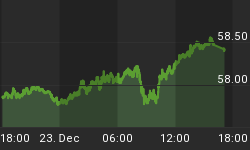8/2/2010 5:25:10 PM
Trade Recommendations:
Take no action.
Daily Trend Indications:

- Positions indicated as Green are Long positions and those indicated as Red are short positions.
- The State of the Market is used to determine how you should trade. A trending market can ignore support and resistance levels and maintain its direction longer than most traders think it will.
- The BIAS is used to determine how aggressive or defensive you should be with a position. If the BIAS is Bullish but the market is in a Trading state, you might enter a short trade to take advantage of a reversal off of resistance. The BIAS tells you to exit that trade on "weaker" signals than you might otherwise trade on as the market is predisposed to move in the direction of BIAS.
- At Risk is generally neutral represented by "-". When it is "Bullish" or "Bearish" it warns of a potential change in the BIAS.
- The Moving Averages are noted as they are important signposts used by the Chartists community in determining the relative health of the markets.
Current ETF positions are:
DIA: Long at $105.26
QQQQ: Long at $46.44
SPY: Long at $111.56
Daily Trading Action
The major index ETFs opened most of one percent lower (SPY actually opened 1.1% lower) and the bulls stepped in after allowing the bears to try to drive the market lower in the opening ten minutes. The bulls were able to push the major indexes into higher territory until shortly before 11:00am when the bears mounted their counterattack. The bears pushed the markets modestly lower until around 2:00pm when the bulls again asserted control and forced the markets higher until there was only a half hour left in the session. The bears pressed an attack which left the major indexes closing mixed and near the flat line. The NASDAQ-100 was a relative outperformer adding around two tenths of one percent for the day. The Russell-2000 (IWM 65.02 +0.04) echoed the moves of the major indexes closing near the flat line. The Semiconductor Index (SOX 348.81 -3.71) continues to have poor performance relative to the major indexes. The Bank Index (KBE 24.19 -0.02) closed nearly unchanged but the Regional Bank Index (KRE 23.77 -0.11) lost a half of one percent. The 20+ Yr Bonds (TLT 100.48 +1.54) gained one and a half percent as market participant fled to the relative safety of bonds. NYSE volume remained below average levels with just 1.176B shares traded on the NYSE. NASDAQ share volume decreased but remained below average with 2.167B shares traded.
There were five economic reports of interest released:
- GDP-Advanced (Q2) rose 2.4% versus an expected 2.5%
- Chain Deflator-Advanced (Q2) came in at 1.8% versus an expected 1.1%
- Employment Cost Index (Q2) rose 0.5% as expected
- Chicago PMI (Jul) came in at 62.3 versus an expected 56.3
- U of Michigan (UoM) Consumer Sentiment-Final (Jul) came in at 67.8 versus an expected 67.5
The first three reports were released an hour before the open. The Chicago PMI was released fifteen minutes after the open and helped promote a major sentiment change in the bullish trading that followed. The UoM report was also a positive helping the nascent rally to grow legs.
Five out of ten economic sectors in the S&P-500 moved higher led by Consumer Discretionary (+0.7%). Declining sectors included Utilities (-0.6%), Tech (-0.5%), Energy -0.3%), Telecom (-0.1%). Financials were unchanged.
Implied volatility for the S&P-500 (VIX 23.50 -0.63) fell more than two percent and closing on its 200-Day Moving Average (DMA). The implied volatility for the NASDAQ-100 (VXN 24.52 -0.66) fell most of three percent and closed just above its 200-DMA.
The yield for the 10-year note fell four basis points to close at 2.91. The price of the near term futures contract for a barrel of crude oil gained fifty-nine cents to close at $78.95.
Market internals were positive with advancers leading decliners 3:2 on the NYSE and by 5:4 on the NASDAQ. Up volume led down volume 6:5 on the NYSE and by a slim margin on the NASDAQ. The index put/call ratio fell 0.62 to close at 1.08. The equity put/call ratio fell four basis points to close at 0.63.
Commentary:
Friday's trading action saw similar volume levels and a snap back rally following a gap down open. This is the same sort of snap back we have seen following gap up opens. The main theme seems to be reversion of the mean. If the bears hadn't sold off the major indexes late in the session, the major indexes would have all ended in the plus column, but clearly market participants were unwilling to push too hard going into the weekend.
It is important to note that the S&P-500 joined the NASDAQ-100, the Dow, and the Semiconductor Index with a BULLISH BIAS. The major indexes remain in a trading state while the Semiconductor Index is actually in a downtrend state as the loan index we regularly monitor in a trending state. The bank indexes have maintained a BEARISH BIAS.
We continue to be patient as the market sorts out short term pressure from long term bullish sentiment.
We hope you have enjoyed this edition of the McMillan portfolio. You may send comments to mark@stockbarometer.com.















